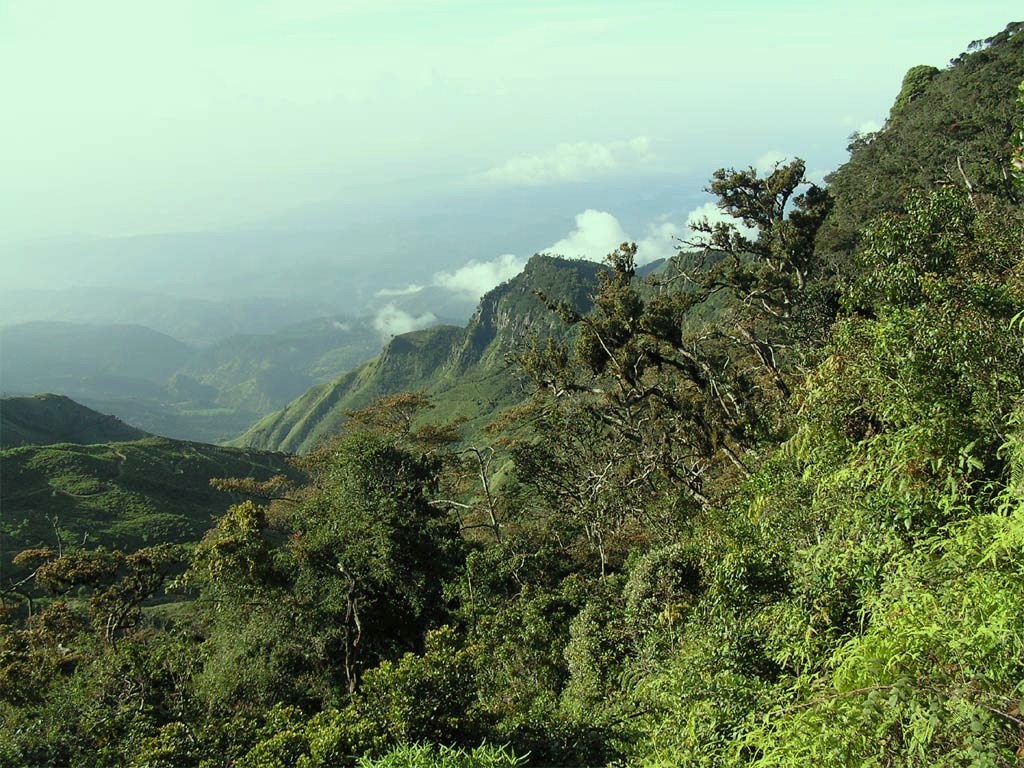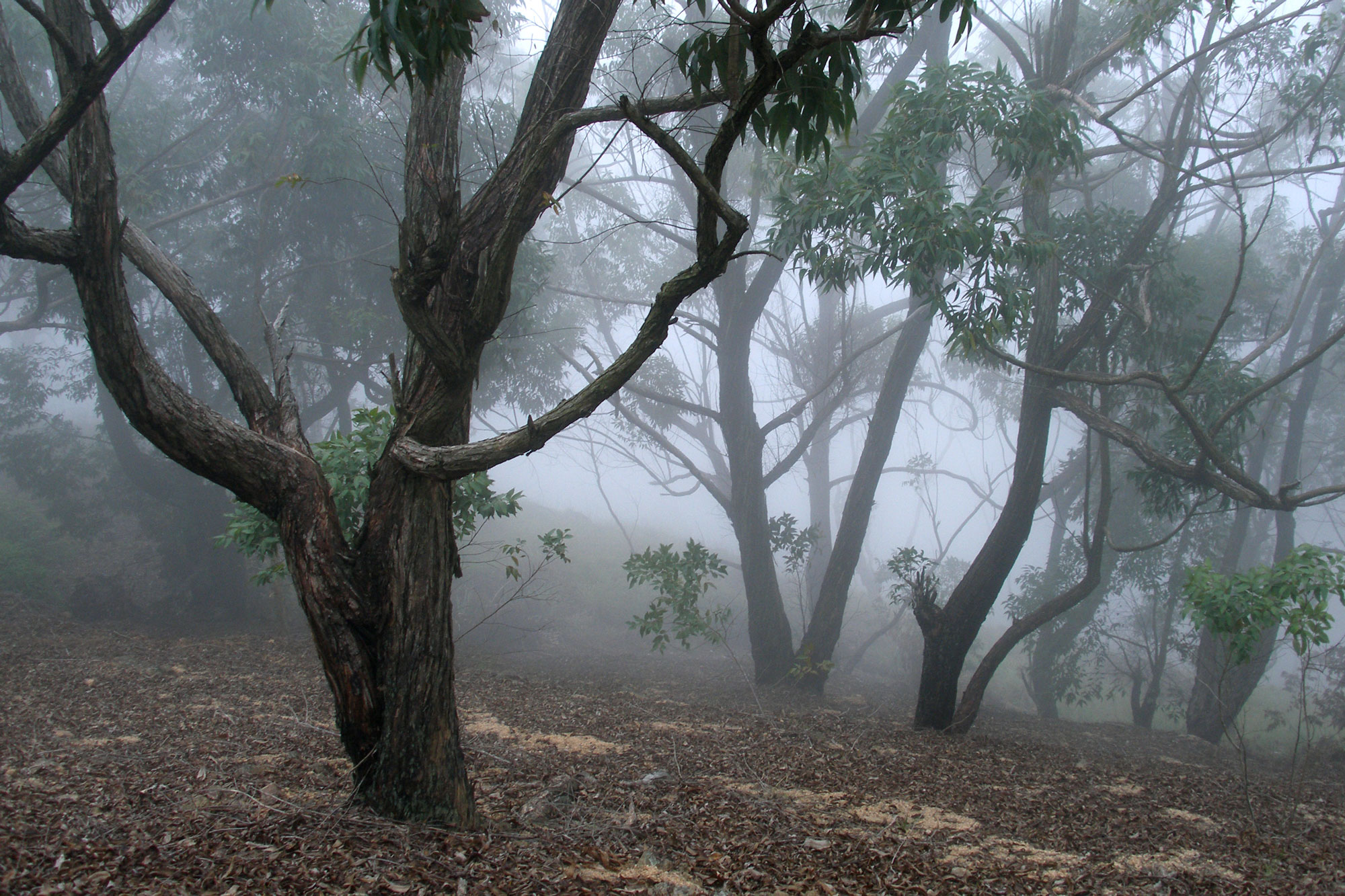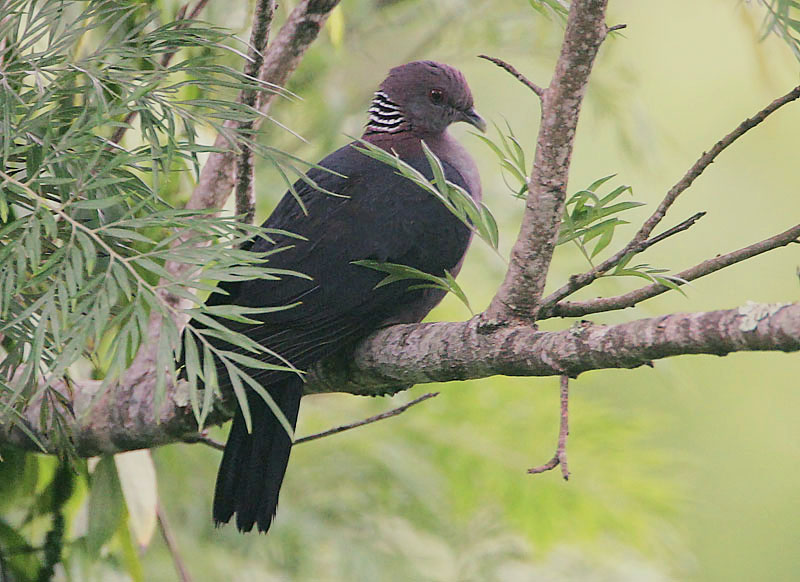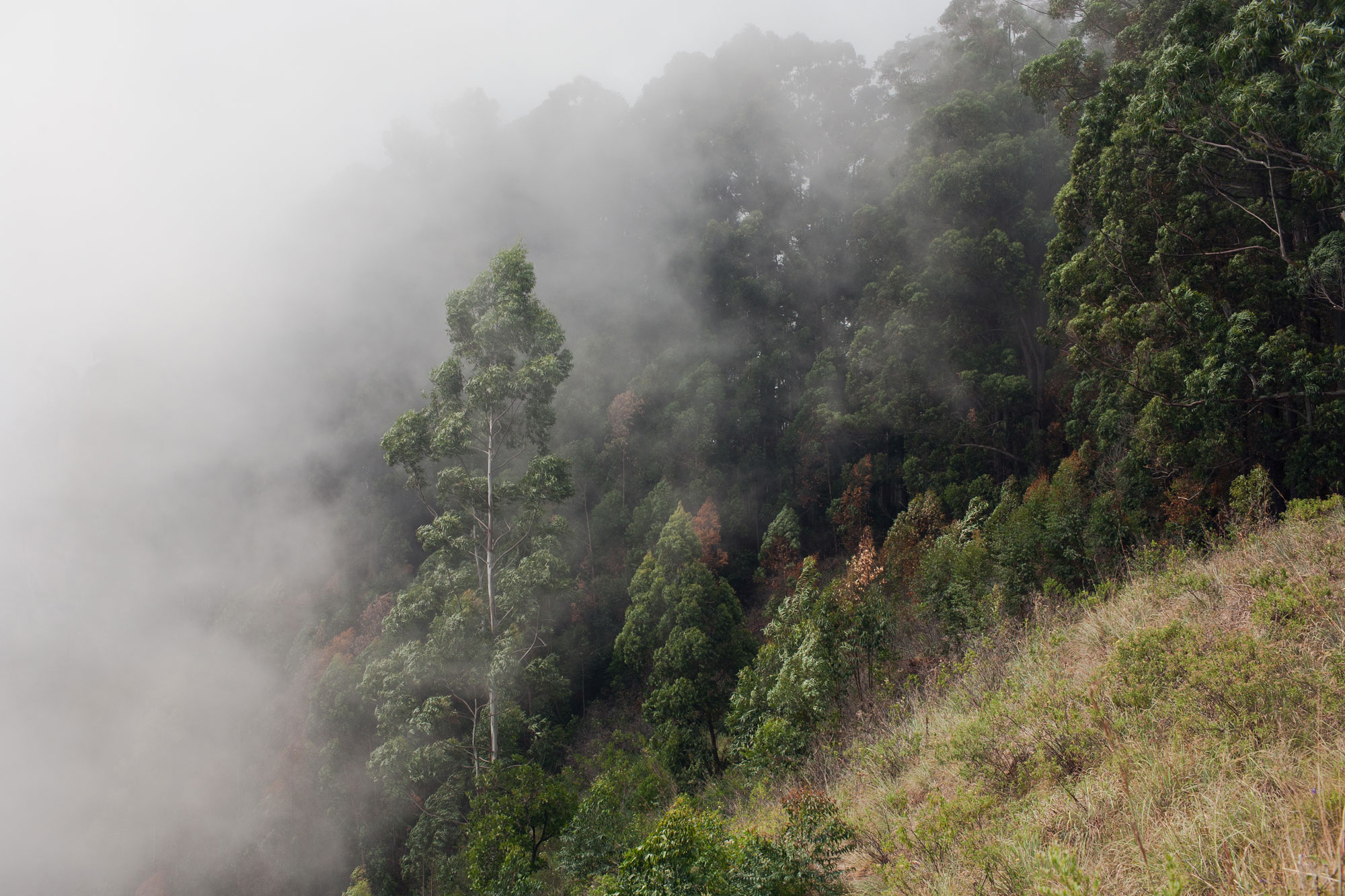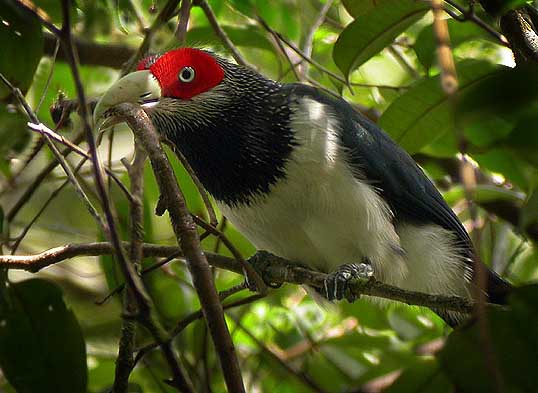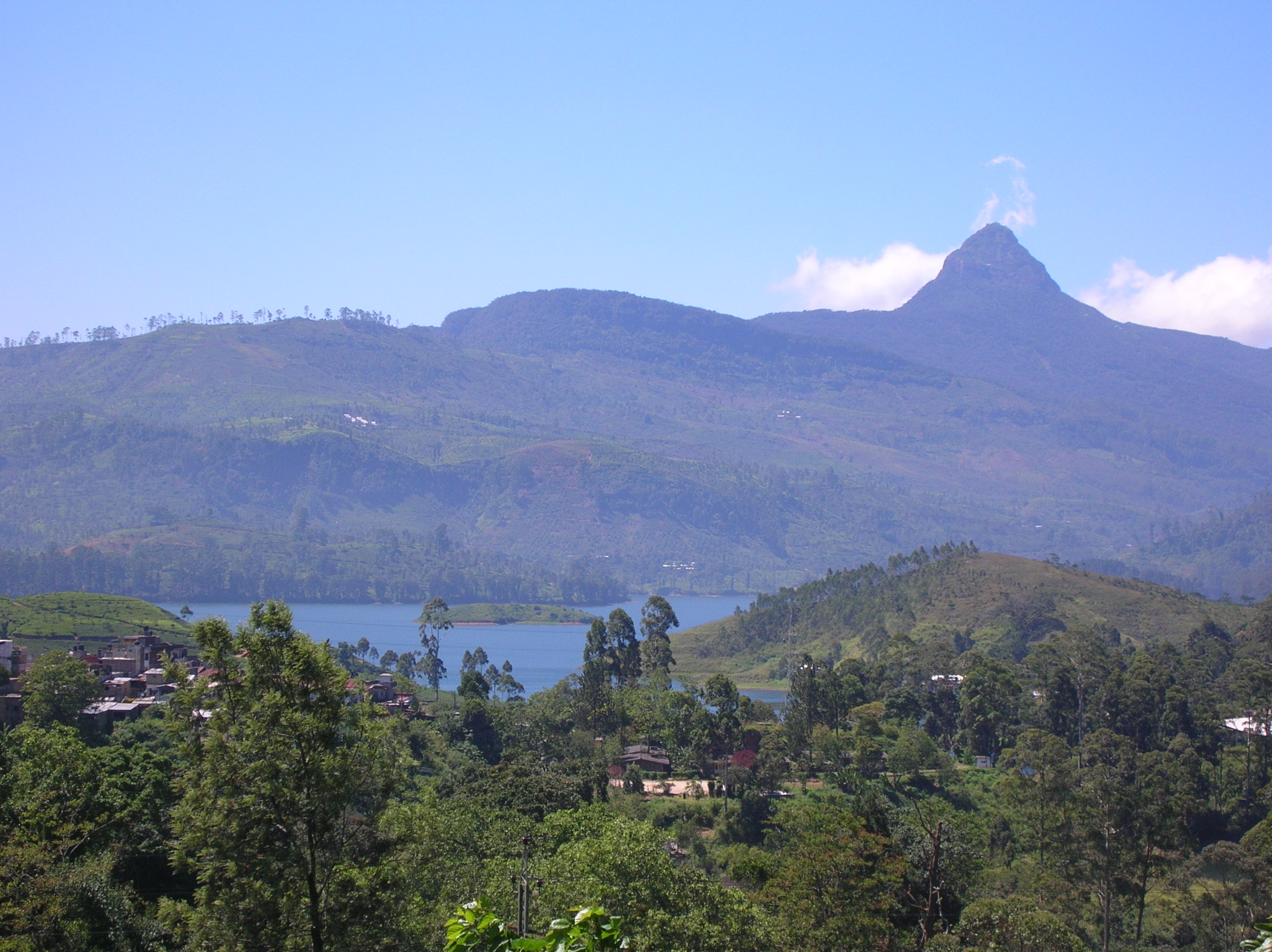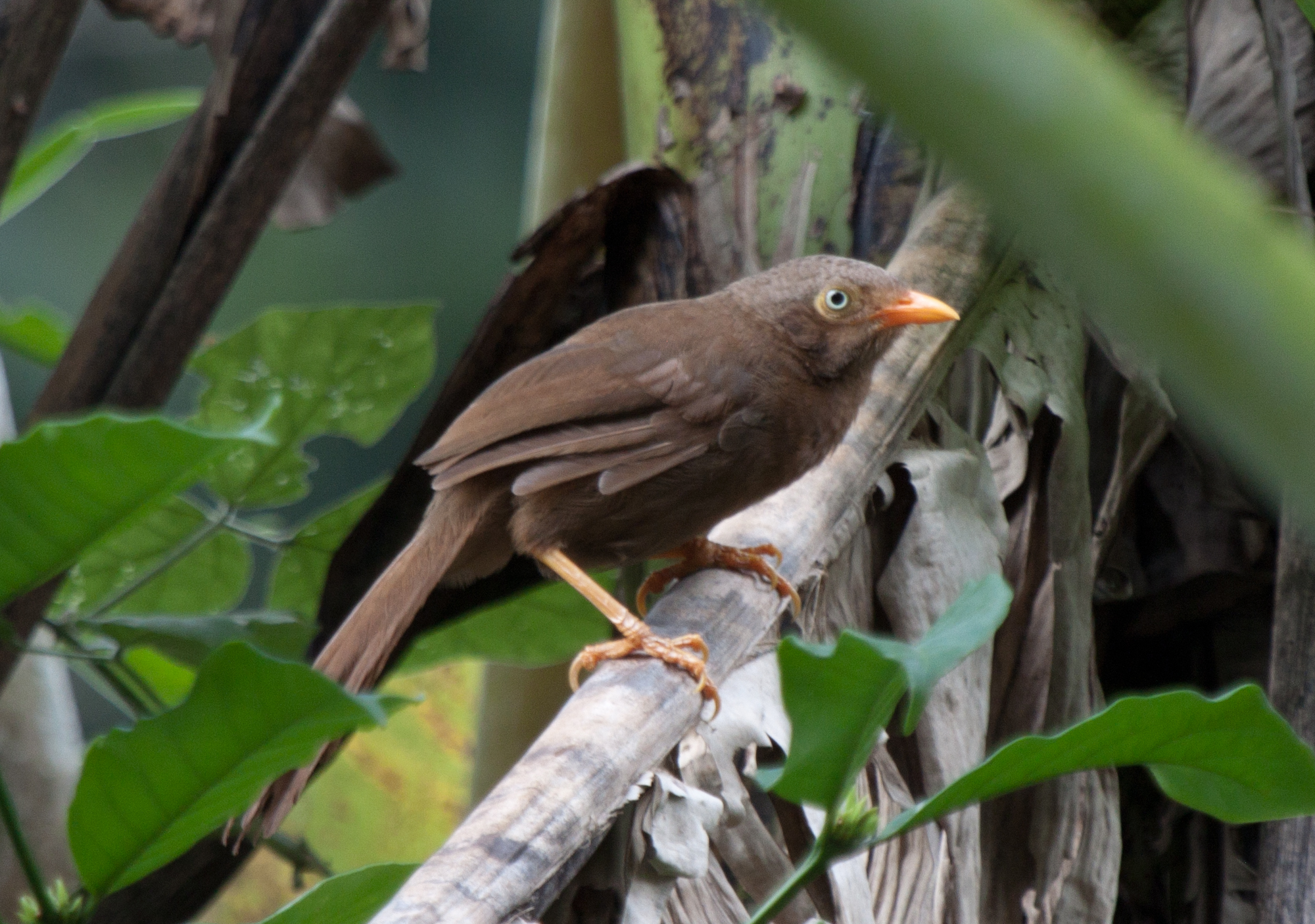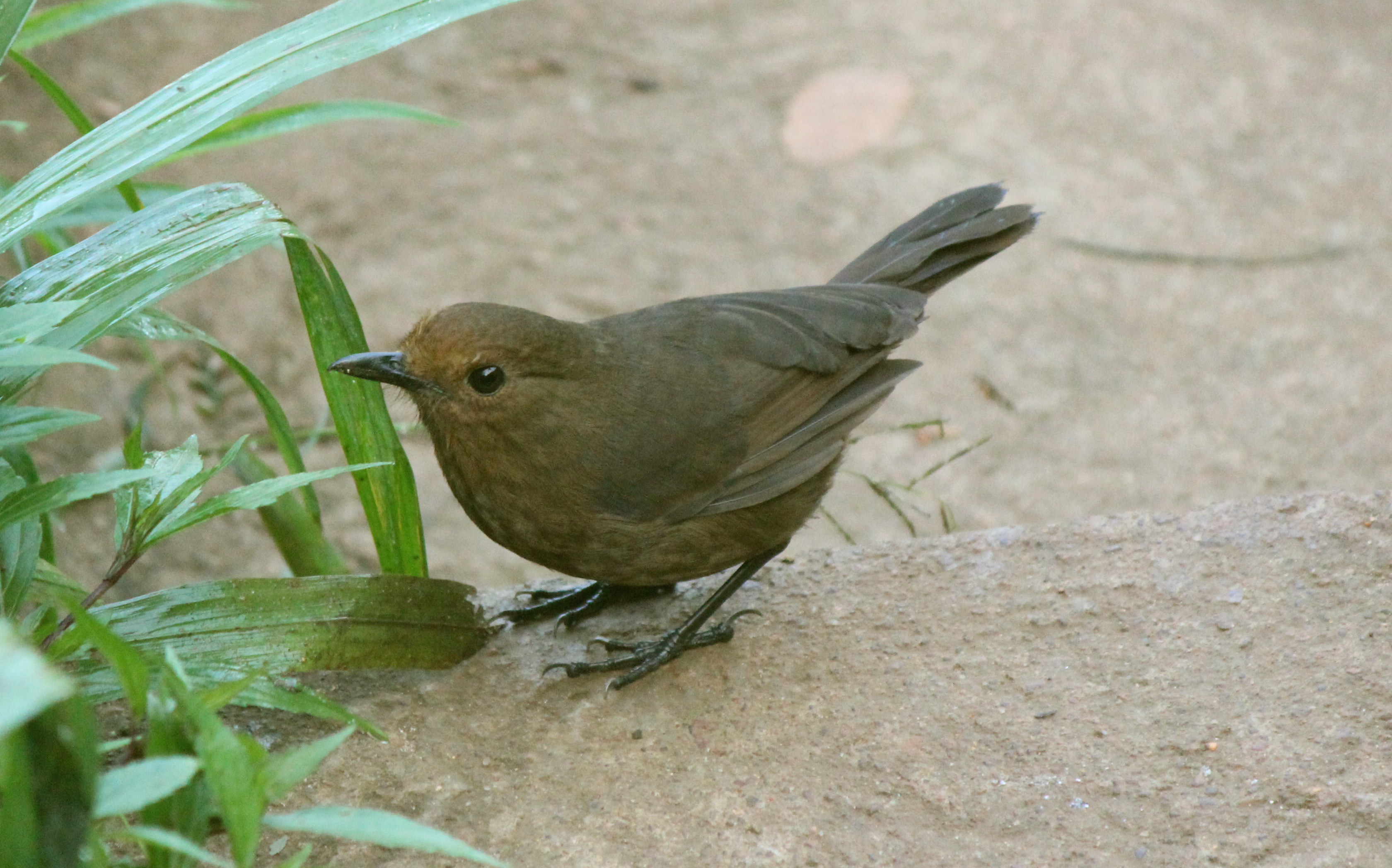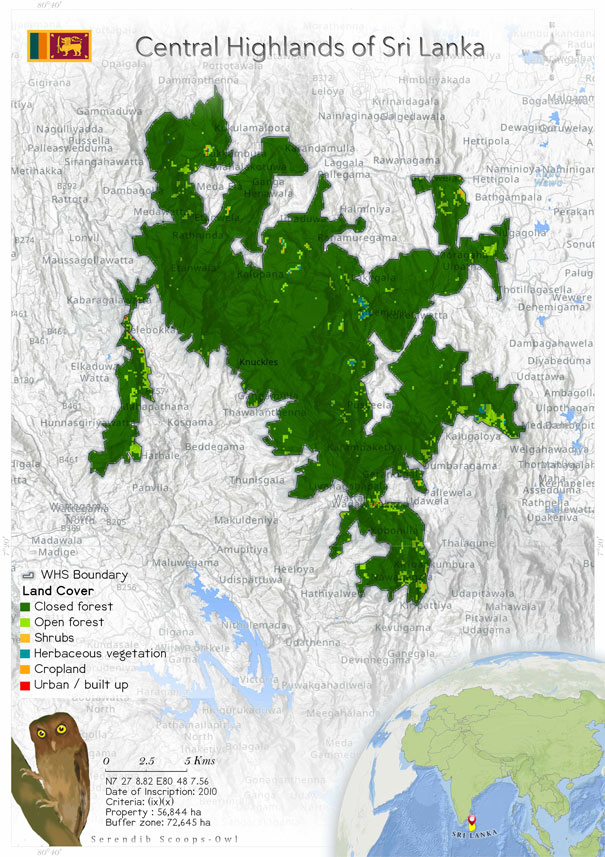
Central Highlands of Sri Lanka (1203)
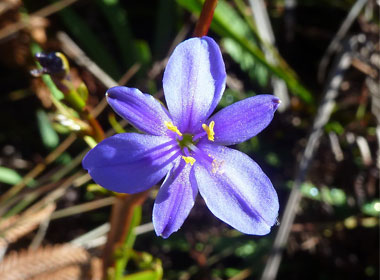 The Central Highlands of Sri Lanka were inscribed as a UNESCO World Heritage Site in 2010. Three protected areas, Peak Wilderness Protected Area, Horton Plains National Park and Knuckles Conservation Forest, are included in the Central Highlands. Located in the south-central part of the country, dominated by the Montane and sub-montane rainforest the Central highlands . The site has the only remains of montane and sub montane rainforests in Sri Lanka. The area is home to a large number of endemic plant and animal species. The Central Highlands are the source of 103 rivers in Sri Lanka. This site has been categorized as a highly threatened and of significant concern according to IUCN World Heritage Outlook. The spread of invasive alien species, illegal gem mining, forest die-back, poaching, small-scale illegal logging, land clearing and cardamom cultivation are the major threats in this area. The pressure arising due to the rising population and tourism in the area is a major concern. Threats arising from outside the boundary need to be curbed. Effective management activities need to be implemented by the management authorities to control the illegal activities in the region. Adequate staffing and funding are required to ensure that the management practices are effective. National-level programmes such as Ecosystem Conservation & Management Project (ESCAMP) 2017 and National REDD+ Investment Framework and Action Plan (NRIFAP) 2018-2022 have been launched recently to address the issues relating to the site.
The Central Highlands of Sri Lanka were inscribed as a UNESCO World Heritage Site in 2010. Three protected areas, Peak Wilderness Protected Area, Horton Plains National Park and Knuckles Conservation Forest, are included in the Central Highlands. Located in the south-central part of the country, dominated by the Montane and sub-montane rainforest the Central highlands . The site has the only remains of montane and sub montane rainforests in Sri Lanka. The area is home to a large number of endemic plant and animal species. The Central Highlands are the source of 103 rivers in Sri Lanka. This site has been categorized as a highly threatened and of significant concern according to IUCN World Heritage Outlook. The spread of invasive alien species, illegal gem mining, forest die-back, poaching, small-scale illegal logging, land clearing and cardamom cultivation are the major threats in this area. The pressure arising due to the rising population and tourism in the area is a major concern. Threats arising from outside the boundary need to be curbed. Effective management activities need to be implemented by the management authorities to control the illegal activities in the region. Adequate staffing and funding are required to ensure that the management practices are effective. National-level programmes such as Ecosystem Conservation & Management Project (ESCAMP) 2017 and National REDD+ Investment Framework and Action Plan (NRIFAP) 2018-2022 have been launched recently to address the issues relating to the site.
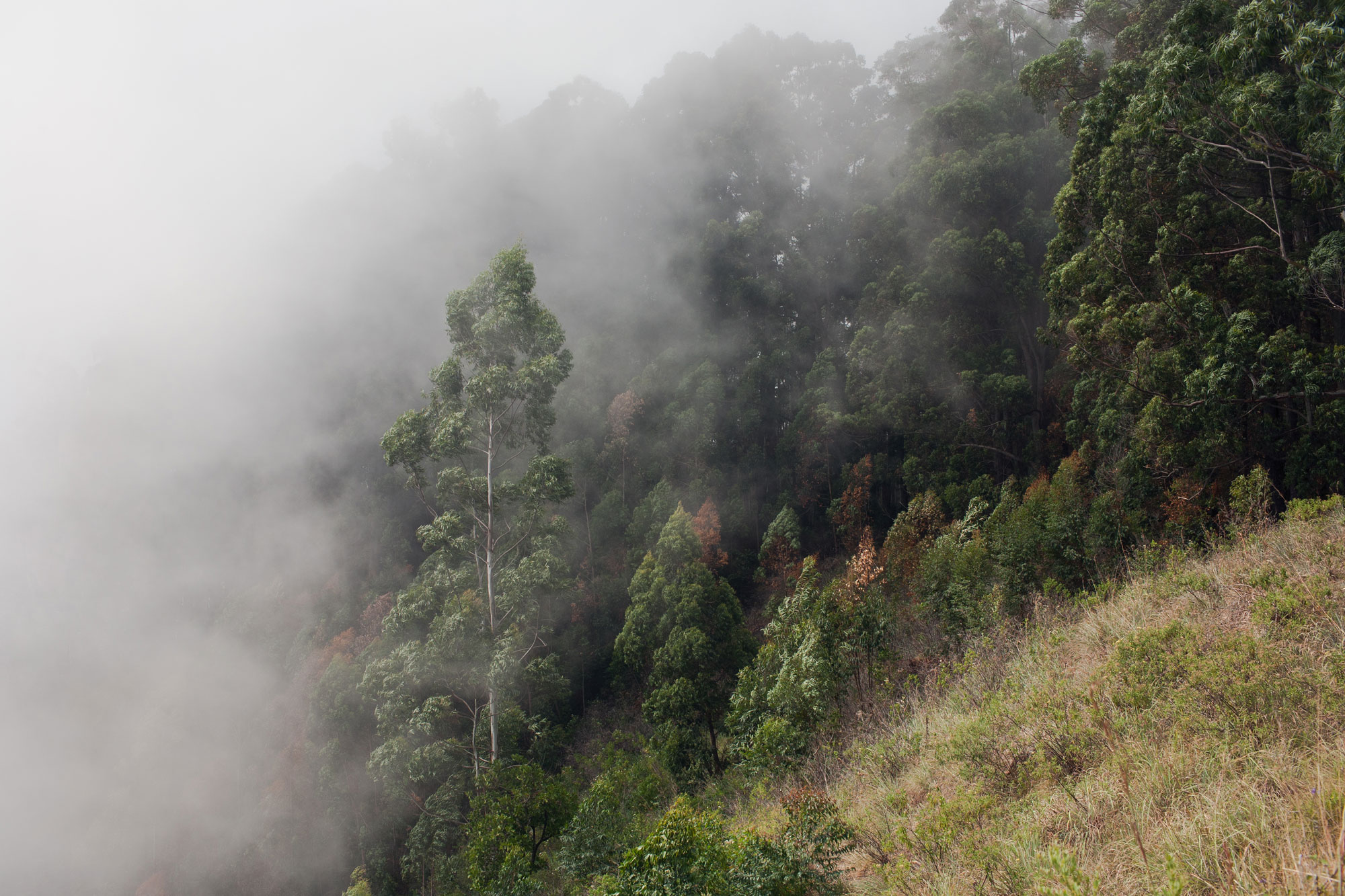 The highlands of Sri Lanka are located in the south-central part of the island. The geographical location of the site is 7° 27' 8.82" N, 80° 48' 7.56" E. The site includes three protected areas, Peak Wilderness Protected Area, Horton Plains National Park and Knuckles Conservation Forest. The elevation reaches to about 2500 m above sea level. The sub-montane and montane rain forests of Sri Lanka found in this site are a super biodiversity hotspot within the Western Ghats and Sri Lanka Biodiversity Hotspot and are home to a varied flora and fauna, including several endangered species such as the western purple-faced langur, the Horton Plains slender loris and the Sri Lankan leopard. Half of the country’s endemic flowering plants and more than 34% of the endemic trees, shrubs and herbs which are restricted to the diverse montane rain forests and adjoining grassland areas are found in this site.
The Central Highlands are the source of 103 rivers in Sri Lanka (Arachchi & Jeevan 2017). The wet highlands give rise to the major perennial rivers such as the Mahaweli, Walawe and Kelani. This site has a number of streams, natural and man-made lakes, reservoirs, freshwater springs and waterfalls. The streams in this region are home to grass species such as Coelachnes impliciuscula and the sedge Isolepis fluitans. The banks of the streams in Horton Plains National Park have the primitive fern Osmunda collina and an endemic dwarf bamboo, Arundinaria densifolia (Arachchi & Jeevan 2017).
The Central Highlands comprise 16 forests and are a very important watershed area in Sri Lanka, making up a little less than 5% of the moist tropical cloud forest in the world. The site is home to more than 50% of the endemic vertebrates, 50% of the endemic flowering plants and more than 34% of the endemic trees, shrubs and herbs in Sri Lanka (Arachchi & Jeevan 2017). These montane rainforests and associated grasslands are home to more than 50% of the endemic flowering plants and more than 34% of the endemic trees, shrubs, and herbs (Ministry of Environment, 2012).
The highlands of Sri Lanka are located in the south-central part of the island. The geographical location of the site is 7° 27' 8.82" N, 80° 48' 7.56" E. The site includes three protected areas, Peak Wilderness Protected Area, Horton Plains National Park and Knuckles Conservation Forest. The elevation reaches to about 2500 m above sea level. The sub-montane and montane rain forests of Sri Lanka found in this site are a super biodiversity hotspot within the Western Ghats and Sri Lanka Biodiversity Hotspot and are home to a varied flora and fauna, including several endangered species such as the western purple-faced langur, the Horton Plains slender loris and the Sri Lankan leopard. Half of the country’s endemic flowering plants and more than 34% of the endemic trees, shrubs and herbs which are restricted to the diverse montane rain forests and adjoining grassland areas are found in this site.
The Central Highlands are the source of 103 rivers in Sri Lanka (Arachchi & Jeevan 2017). The wet highlands give rise to the major perennial rivers such as the Mahaweli, Walawe and Kelani. This site has a number of streams, natural and man-made lakes, reservoirs, freshwater springs and waterfalls. The streams in this region are home to grass species such as Coelachnes impliciuscula and the sedge Isolepis fluitans. The banks of the streams in Horton Plains National Park have the primitive fern Osmunda collina and an endemic dwarf bamboo, Arundinaria densifolia (Arachchi & Jeevan 2017).
The Central Highlands comprise 16 forests and are a very important watershed area in Sri Lanka, making up a little less than 5% of the moist tropical cloud forest in the world. The site is home to more than 50% of the endemic vertebrates, 50% of the endemic flowering plants and more than 34% of the endemic trees, shrubs and herbs in Sri Lanka (Arachchi & Jeevan 2017). These montane rainforests and associated grasslands are home to more than 50% of the endemic flowering plants and more than 34% of the endemic trees, shrubs, and herbs (Ministry of Environment, 2012).
Criterion (ix)
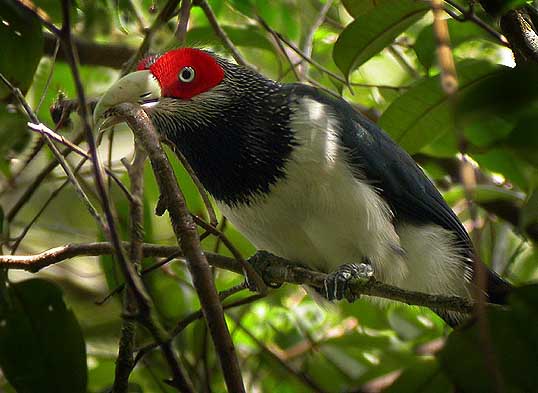 The property includes the largest and least disturbed remaining areas of the submontane and montane rain forests of Sri Lanka, which are a global conservation priority on many accounts. The component parts stretch across the Ceylonese rainforest and the Ceylonese monsoon forest. In the montane forests represented by the three serial properties, the faunal elements provide strong evidence of geological and biological processes in the evolution and development of taxa. The endemic purple-faced langur of Sri Lanka (Semnopithecus vetulus) has evolved into several morphologically different forms recognizable today. The Sri Lankan leopard, the only representative in the island of the genus Panthera, which diverged from other felids about 1.8 million years ago, is a unique sub-species (Panthera pardus kotiya). All three nominated properties provide habitat to this subspecies of leopard, endemic to Sri Lanka. Long isolation and the concomitant evolutionary processes have also resulted in a Sri Lankan molluscan fauna that is the most distinct in the South Asian region
The property includes the largest and least disturbed remaining areas of the submontane and montane rain forests of Sri Lanka, which are a global conservation priority on many accounts. The component parts stretch across the Ceylonese rainforest and the Ceylonese monsoon forest. In the montane forests represented by the three serial properties, the faunal elements provide strong evidence of geological and biological processes in the evolution and development of taxa. The endemic purple-faced langur of Sri Lanka (Semnopithecus vetulus) has evolved into several morphologically different forms recognizable today. The Sri Lankan leopard, the only representative in the island of the genus Panthera, which diverged from other felids about 1.8 million years ago, is a unique sub-species (Panthera pardus kotiya). All three nominated properties provide habitat to this subspecies of leopard, endemic to Sri Lanka. Long isolation and the concomitant evolutionary processes have also resulted in a Sri Lankan molluscan fauna that is the most distinct in the South Asian region
Criterion (x)
The montane forests in the three serial components contain the only habitats of many threatened plant and animal species and are therefore of prime importance for their in-situ conservation. The property features exceptionally high numbers of threatened species, extraordinary levels of endemism, and high levels of species richness in a number of taxonomic groups. Of the 408 species of vertebrates 83% of indigenous fresh water fishes and 81% of the amphibians in Peak Wilderness Protected Area are endemic, 91% of the amphibians and 89% of the reptiles in Horton Plains are endemic, and 64% of the amphibians and 51% of the reptiles in the Knuckles Conservation Forest are endemic.
Status
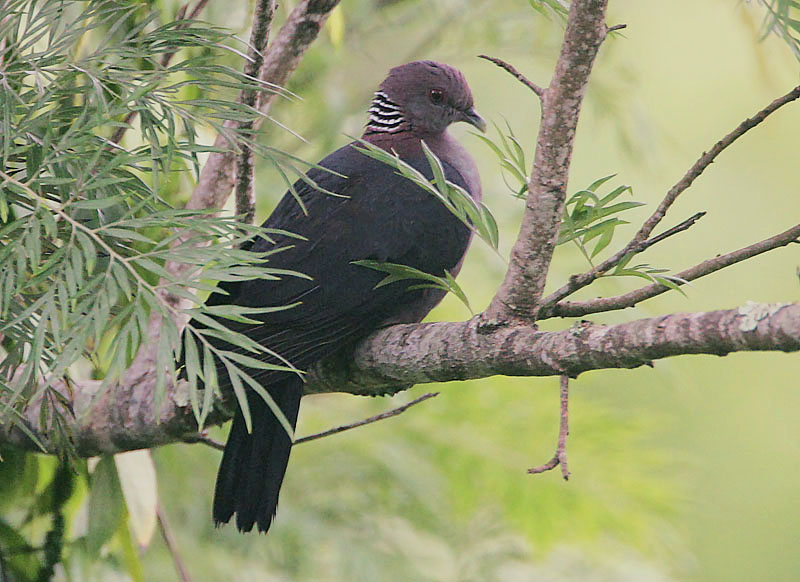 The Central Highlands of Sri Lanka were inscribed in the World Heritage list in 2010, and they have one of the world's richest biodiversity. The site conserves the only remaining montane and sub-montane rainforests of Sri Lanka and is home to a number of endemic species of the region. The staffing and funding needed to carry out the planned conservation efforts are crucial for the maintenance of the value and addressing issues of concern. According to the IUCN World Heritage Outlook, this site is of "High Concern" value, and its status is deteriorating. Invasive species, impacts of increasing tourism, the pressure of an increasing population and other ecosystem modifications need management efforts and funding. There is a need for a framework to monitor the visitors in the area. The rising numbers of tourists and pilgrims are having severe environmental impacts on the site.
The major concern in this area is the impact due to the large number of visitors. A management and monitoring framework for ecotourism is underway in this site. A number of illegal activities are carried out in the buffer zone of the site, such as poaching for the pet trade, collection of Sri Lankan agarwood, small-scale illegal logging and land clearing. There is a need for better demarcation of the site boundaries and for improvement of the effectiveness of the law enforcement to have a check on the illegal activities. A new management plan has been framed for the site, but the inadequate staff capacity and funding are creating a hindrance to the effective implementation of the management plan.
As per the IUCN World Heritage Outlook report, adequate staffing and funding are needed to ensure effective management practices. The issues relating to this site can be dealt with by implementing the newly launched national-level programmes (Ecosystem Conservation & Management Project (ESCAMP) 2017 and National REDD+ Investment Framework and Action Plan (NRIFAP) 2018–2022).
The Central Highlands of Sri Lanka were inscribed in the World Heritage list in 2010, and they have one of the world's richest biodiversity. The site conserves the only remaining montane and sub-montane rainforests of Sri Lanka and is home to a number of endemic species of the region. The staffing and funding needed to carry out the planned conservation efforts are crucial for the maintenance of the value and addressing issues of concern. According to the IUCN World Heritage Outlook, this site is of "High Concern" value, and its status is deteriorating. Invasive species, impacts of increasing tourism, the pressure of an increasing population and other ecosystem modifications need management efforts and funding. There is a need for a framework to monitor the visitors in the area. The rising numbers of tourists and pilgrims are having severe environmental impacts on the site.
The major concern in this area is the impact due to the large number of visitors. A management and monitoring framework for ecotourism is underway in this site. A number of illegal activities are carried out in the buffer zone of the site, such as poaching for the pet trade, collection of Sri Lankan agarwood, small-scale illegal logging and land clearing. There is a need for better demarcation of the site boundaries and for improvement of the effectiveness of the law enforcement to have a check on the illegal activities. A new management plan has been framed for the site, but the inadequate staff capacity and funding are creating a hindrance to the effective implementation of the management plan.
As per the IUCN World Heritage Outlook report, adequate staffing and funding are needed to ensure effective management practices. The issues relating to this site can be dealt with by implementing the newly launched national-level programmes (Ecosystem Conservation & Management Project (ESCAMP) 2017 and National REDD+ Investment Framework and Action Plan (NRIFAP) 2018–2022).
